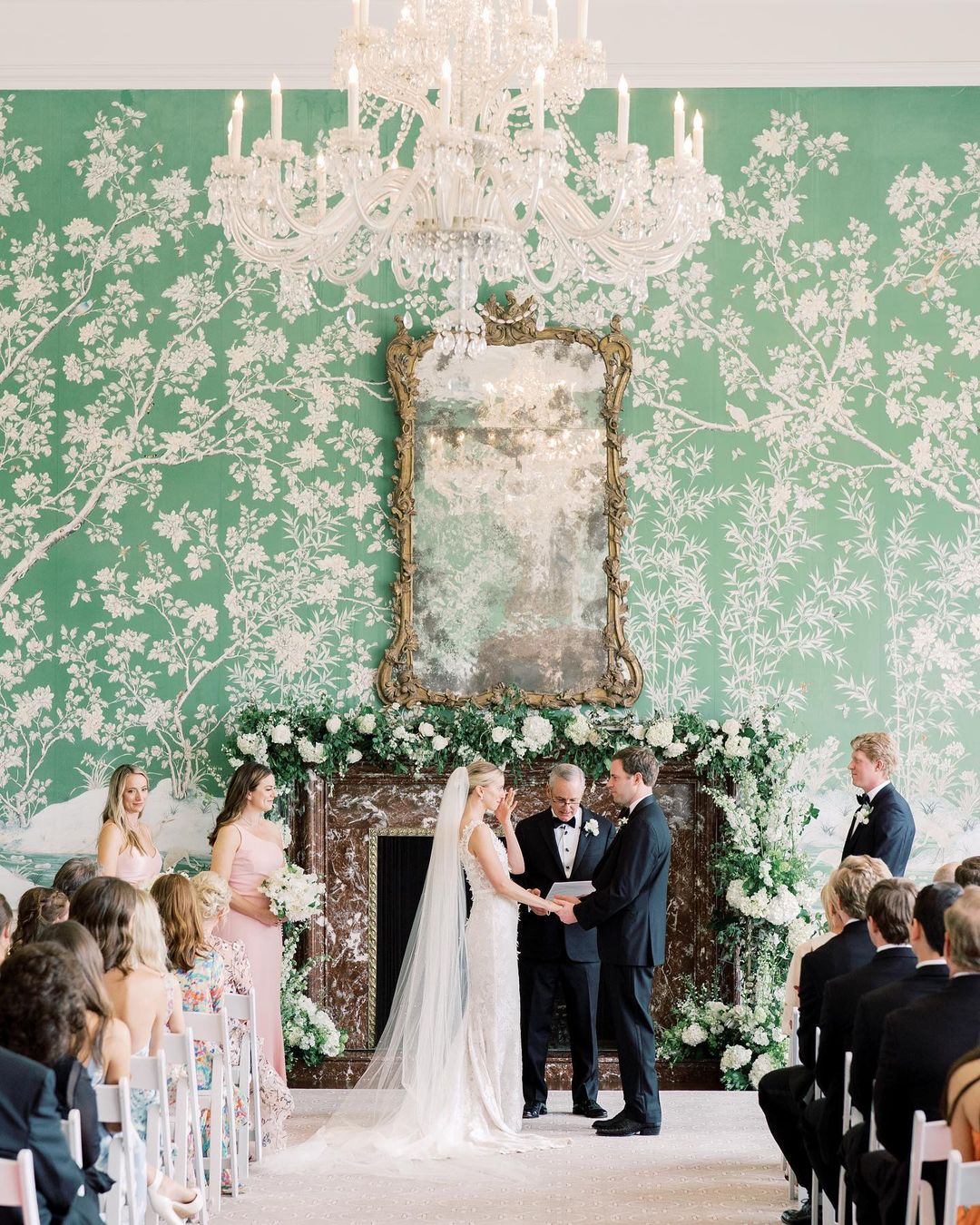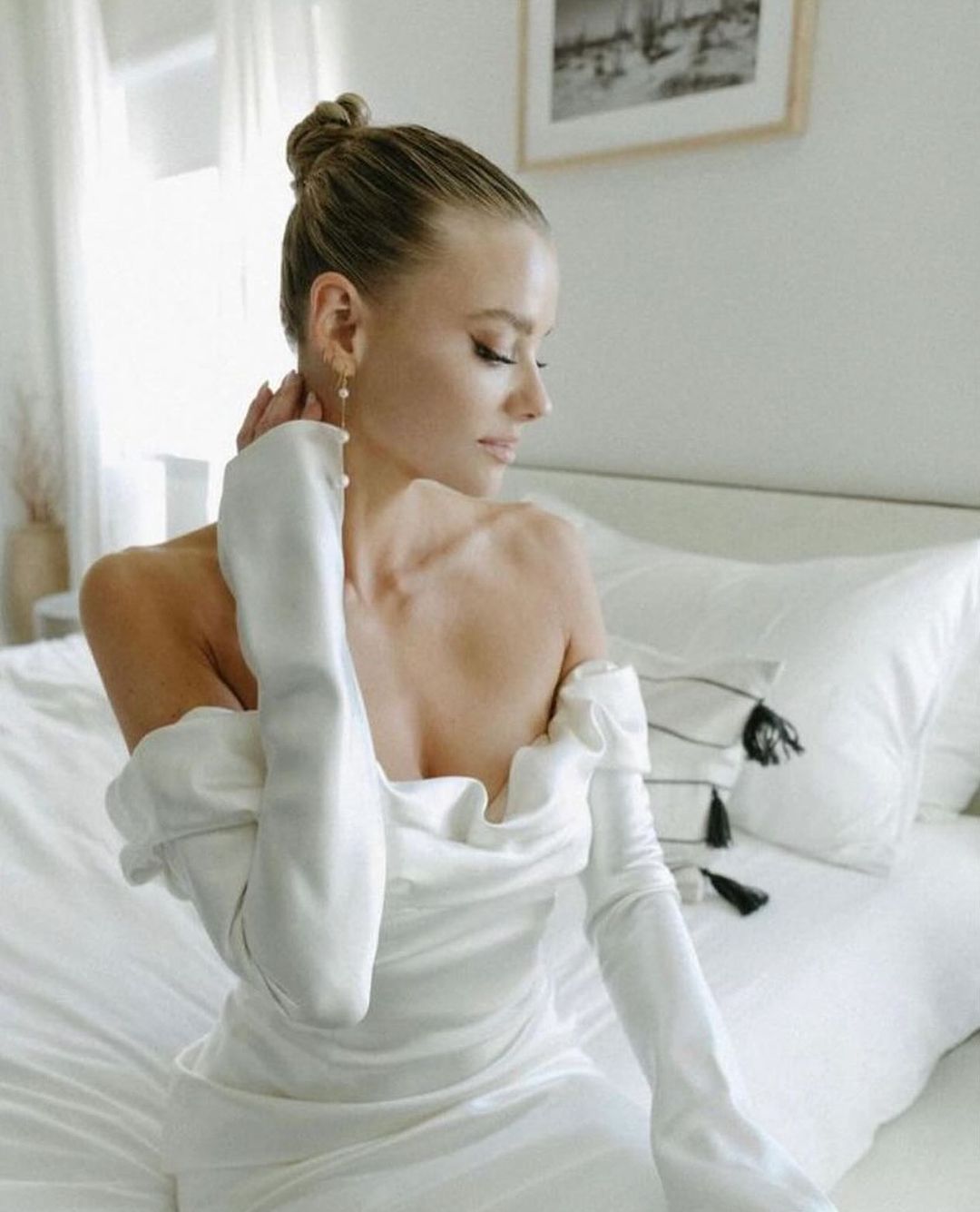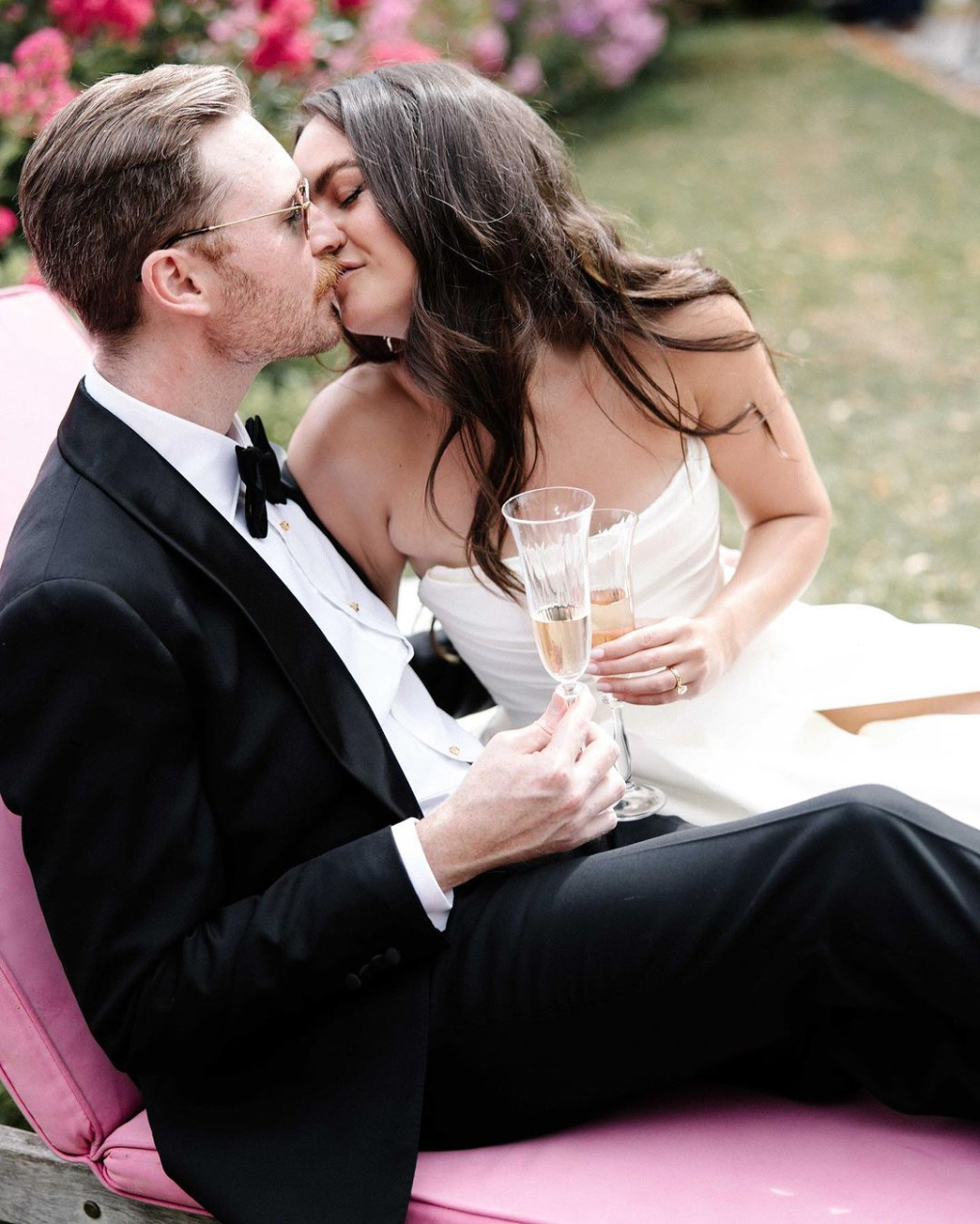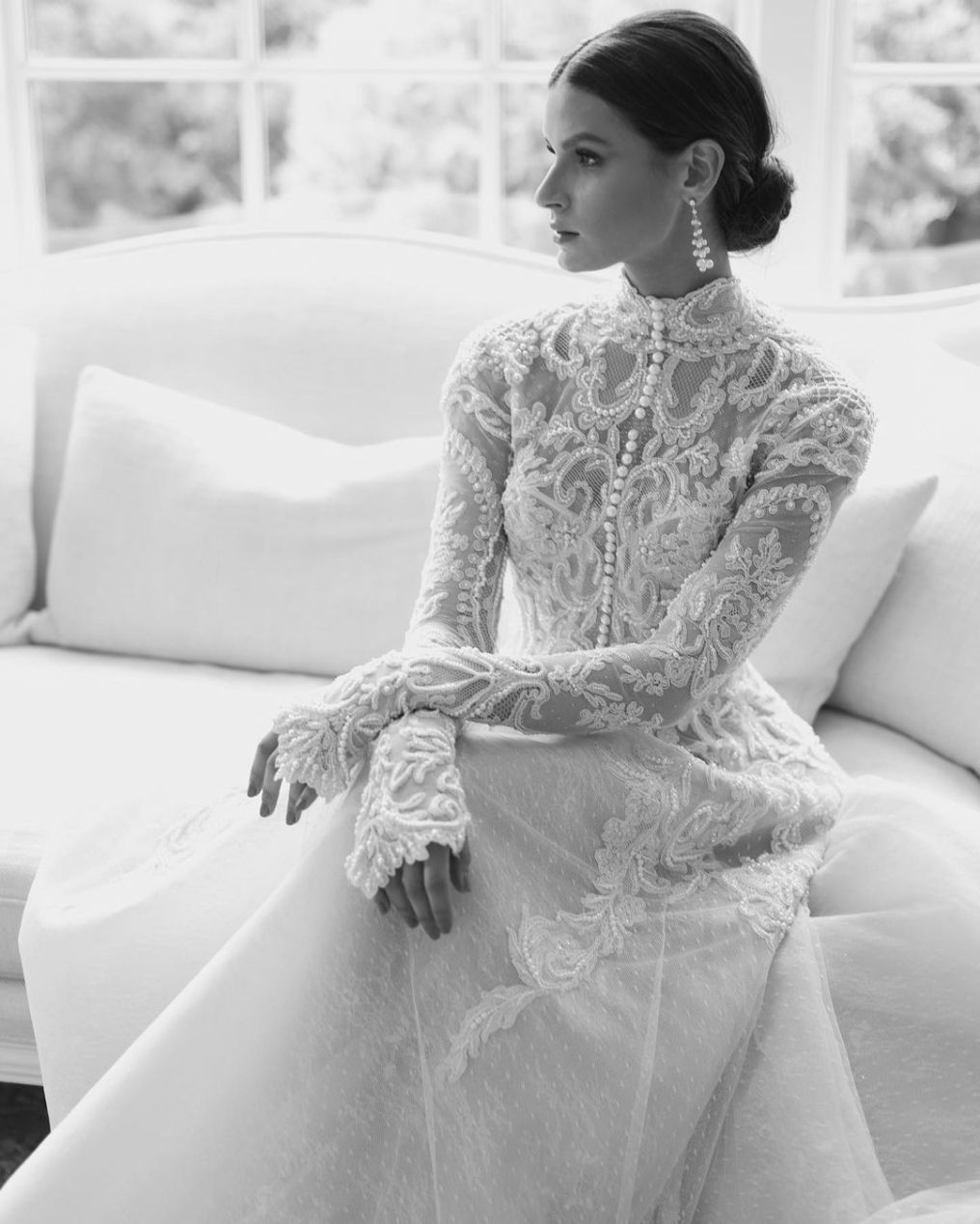The Sacred Adornments of an Indian Bride
- Author: Natali Grace Levine
- Reading time: 11 min 47 sec
- Publication date: 03/31/2024
- Updated: 09/01/2025
For a Hindu bride, her wedding day is one of the most important and auspicious days of her life. It is a day filled with vibrant colors, intricate traditions, and symbolic adornments that hold deep cultural significance. From head to toe, a Hindu bride adorns herself with a multitude of ornaments, each one carefully chosen to enhance her beauty and bring good fortune to her new journey as a married woman. So, let’s take a look at the traditional adornments of an Indian bride!

Why Does a Hindu Bride Wear Special Adornments
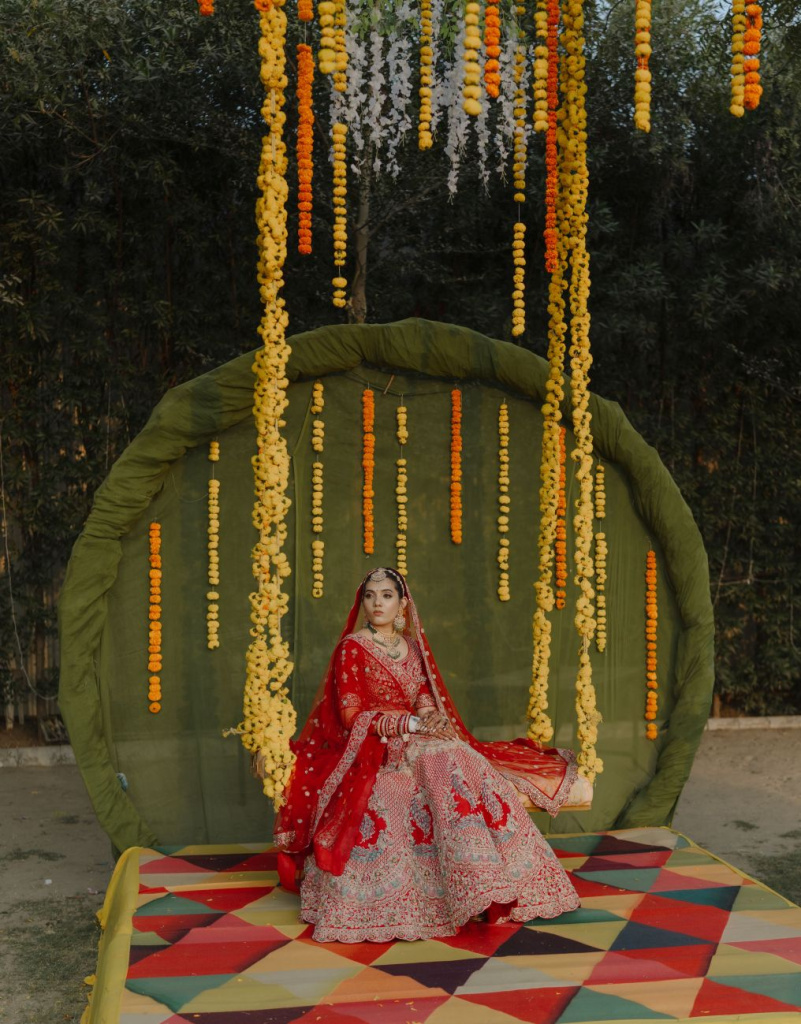
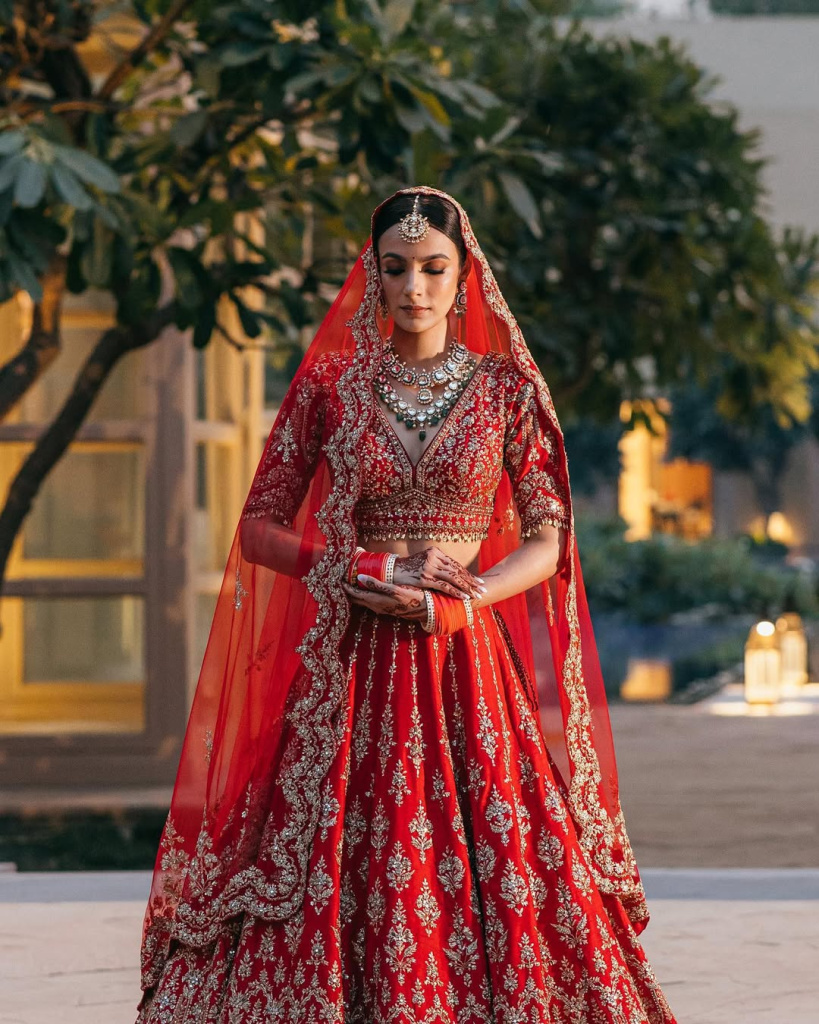
Solah Shringar, often known as the "sixteen adornments," is a centuries-old Hindu wedding ceremonial practice. It is a religious ritual that is profoundly ingrained in Hindu culture and mythology, representing the bride's transformation from a young woman to a loving wife and a symbol of divine femininity.
According to ancient Hindu scriptures, the sixteen adornments are believed to be the same ornaments worn by the goddess Parvati during her marriage to Lord Shiva. By adorning herself with these symbolic ornaments, the bride is not only paying homage to the divine couple but also invoking their blessings upon her own marriage.
The Solah Shringar is a visual representation of the different aspects of womanhood, beauty, and auspiciousness. Each adornment carries a specific meaning and significance, and together, they are believed to enhance the bride's radiance, attract positive energies, and ensure a prosperous and fulfilling married life. For a Hindu bride, following this ancient tradition is a way to connect with her cultural heritage and embrace the profound symbolism that has been passed down through generations. It is a sacred ritual that transcends mere adornment and becomes a spiritual journey, preparing her for the new chapter in her life as a wife and a partner in the sacred union of marriage.
The Solah Shringar is not just about physical beauty; it is a celebration of the bride's inner strength, resilience, and the divine feminine energy that she embodies. By adorning herself with these sixteen ornaments, the bride acknowledges the sacred bond she is about to enter and invites the blessings of the divine forces to guide her through the challenges and joys of married life.
16 Essential Adornments for the Indian Bride
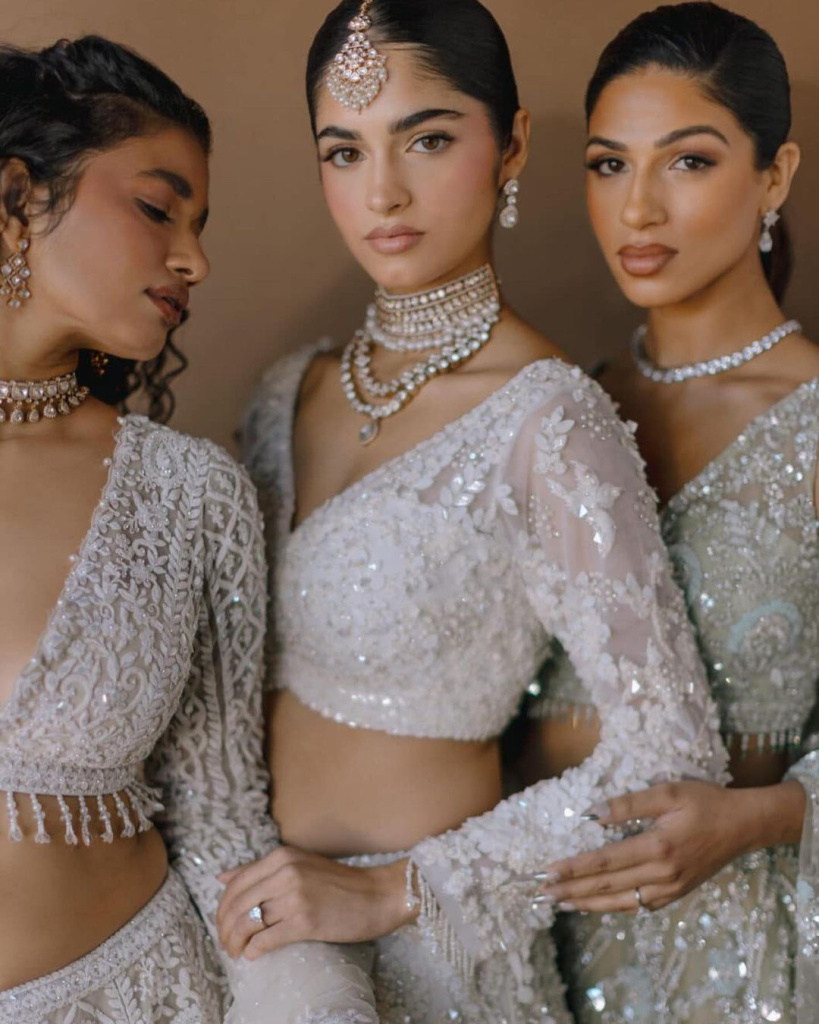
The sixteen Indian bridal adornments that make up the Solah Shringar are not just mere accessories; they are physical manifestations of cultural beliefs and values that have stood the test of time.
Sindoor
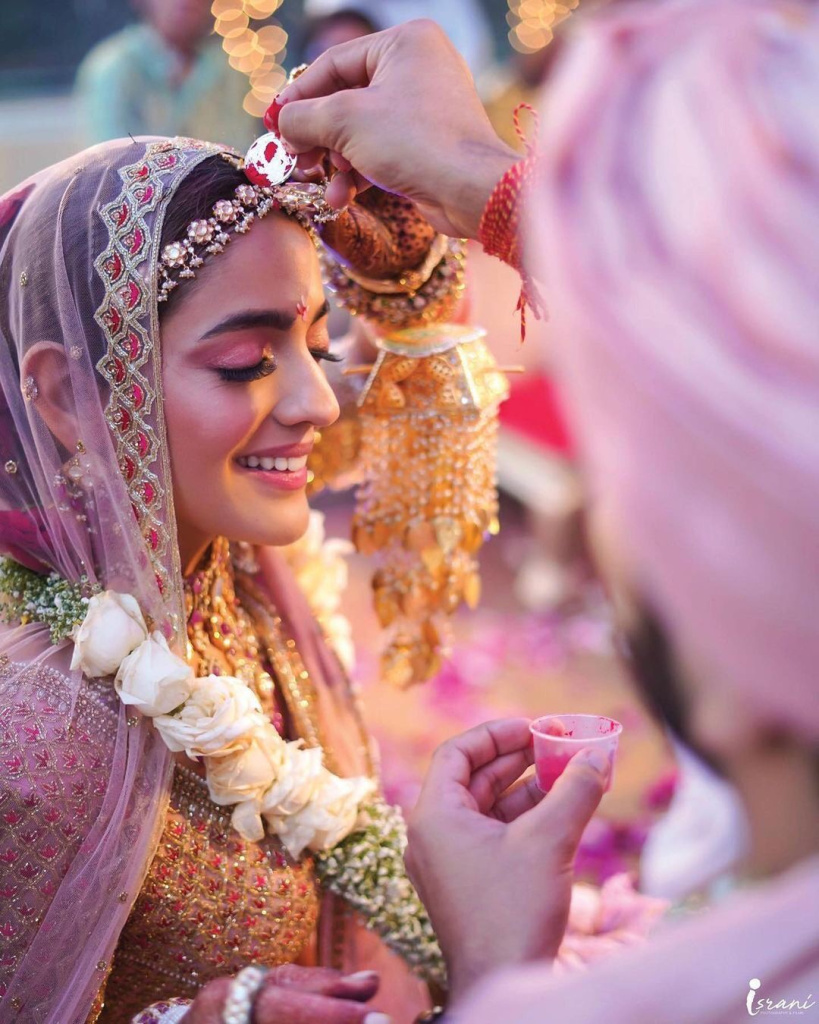
The sindoor, a vermilion red powder, is perhaps the most recognizable adornment of a Hindu bride. It is applied along the parting of her hair, symbolizing her marital status and the beginning of her new life as a wife. The vibrant color is believed to invoke the blessings of the goddess Parvati and ensure a long and happy married life. The application of sindoor is a sacred ritual performed by the groom himself, marking the bride's acceptance into his family. For the bride, wearing the sindoor is a matter of pride and honor, as it represents her commitment to her husband and her new family.
Keshapasharachana
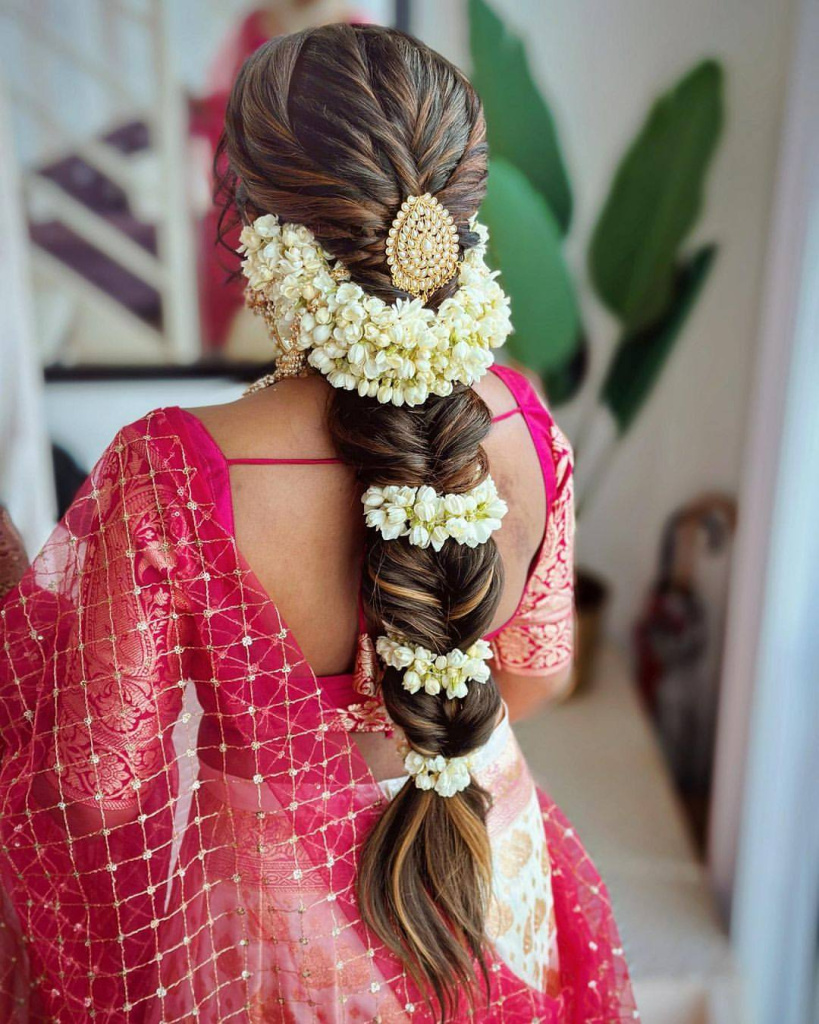
The keshapasharachana, or the intricate hairstyle adorned with flowers and jewelry, is a true work of art. It not only enhances the bride's beauty but also represents her readiness to embrace the responsibilities of married life. The flowers and ornaments woven into her hair are believed to attract positive energies and ward off evil spirits. This hairstyle is often created by skilled hairdressers who have mastered the art of traditional Indian hairstyling techniques.
The choice of flowers and their arrangement hold symbolic significance. For instance, the marigold flowers are believed to represent the sun and are used to invoke the blessings of Lord Surya, the Sun God. Similarly, the jasmine flowers are associated with purity and are believed to attract divine grace. The jeweled ornaments, such as the jadanagam (hair ornament), are not only beautiful but also symbolize prosperity and wealth.
The keshapasharachana is a labor of love, often taking hours to complete. It is a reflection of the bride's patience, grace, and dedication to upholding traditional values. As she sits through the intricate process, the bride is believed to be purifying her mind and body, preparing herself for the sacred union of marriage.
Mangtikka
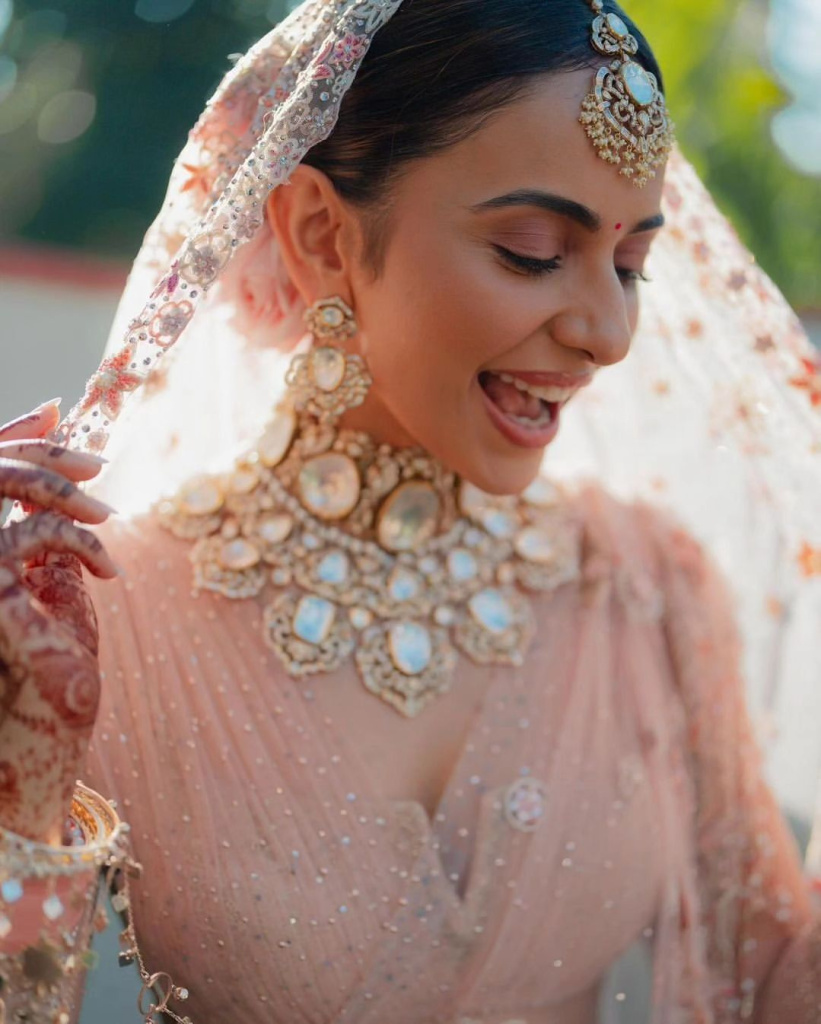
The mangtikka, a jeweled ornament worn on the forehead, is a symbol of marital bliss and prosperity. It is believed to protect the bride from negative energies and ensure a harmonious union between the couple. The intricate designs and precious stones used in its creation add to the bride's ethereal beauty. The mangtikka is often considered a representation of the third eye, symbolizing spiritual awareness and intuition.
The mangtikka is not just a decorative piece; it is a powerful talisman believed to protect the bride from negative energies and the evil eye. The precious stones, such as rubies, emeralds, and pearls, are carefully chosen for their auspicious qualities and are believed to enhance the bride's radiance and bring good fortune to her new life.
Bindi
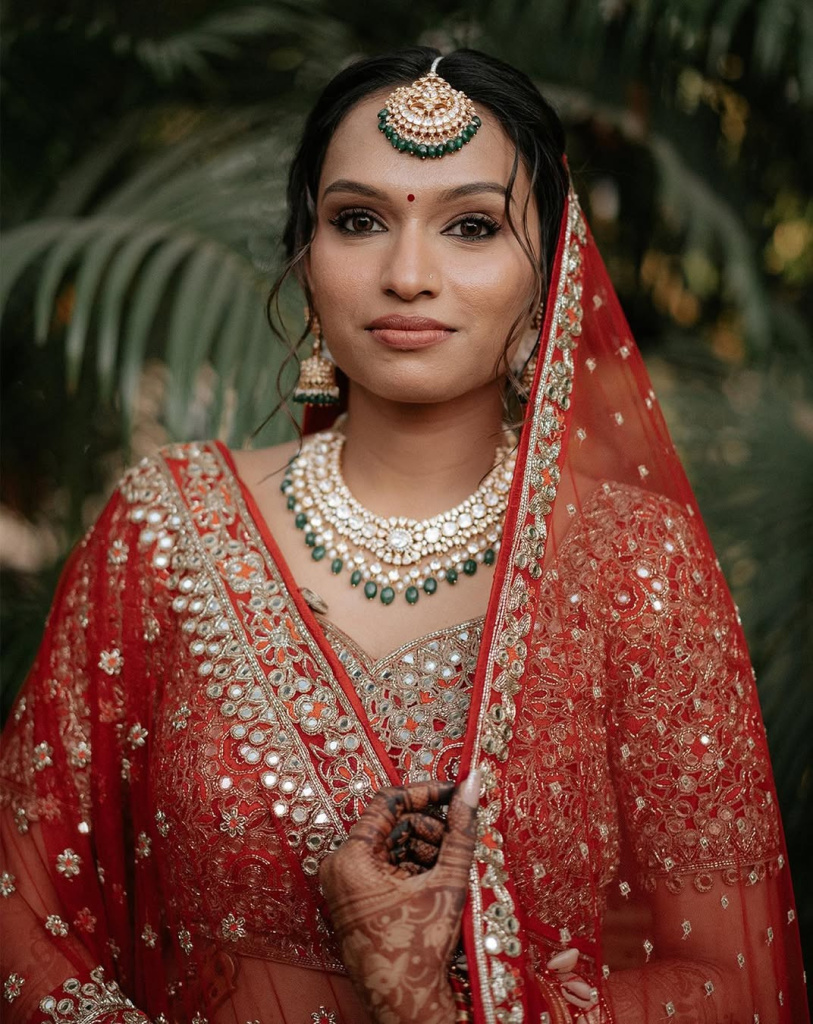
The bindi, a decorative dot adorned between the eyebrows, is a timeless symbol of femininity and spiritual awareness. For a Hindu bride, it represents her third eye and is believed to enhance her intuition and wisdom, guiding her through the challenges of married life.
The practice of wearing a bindi dates back to ancient times and is mentioned in various Hindu scriptures. It is believed to be a representation of the chakra or energy center located between the eyebrows, also known as the "agna chakra." This chakra is associated with wisdom, intuition, and spiritual enlightenment.
The design and color of the bindi can vary depending on regional traditions and personal preferences. Some brides opt for a traditional red bindi, while others choose intricate designs adorned with precious stones like diamonds or rubies. Regardless of the design, the bindi is a powerful symbol that connects the bride to her cultural roots and spiritual beliefs.
Kohl
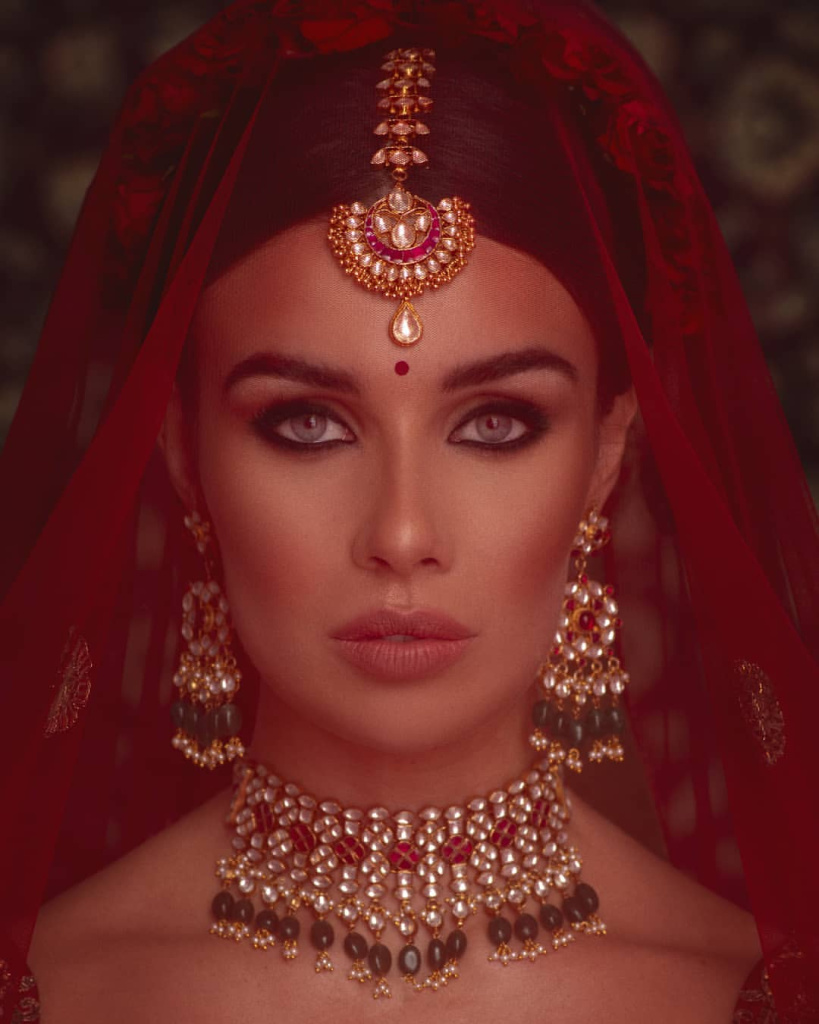
The application of kohl, or kajal, around the eyes is an ancient tradition. It is believed to ward off negative energies and protect the bride from the evil eye, ensuring a joyous and prosperous future. The dark, sultry look created by the kohl accentuates the bride's features and adds a touch of mystery and allure.
Kohl has been used for cosmetic purposes in India and the Middle East for centuries. It is made from various natural ingredients, such as burnt almonds, lead sulfide, and other minerals. The process of applying kohl is a delicate one, often performed by skilled artists or family members.
The kohl-rimmed eyes of the bride are not only a symbol of beauty but also represent her ability to see the world with clarity and wisdom. It is believed that the dark, mesmerizing look created by the kohl will captivate her new husband and ensure a strong, unbreakable bond between them.
Karn Phool
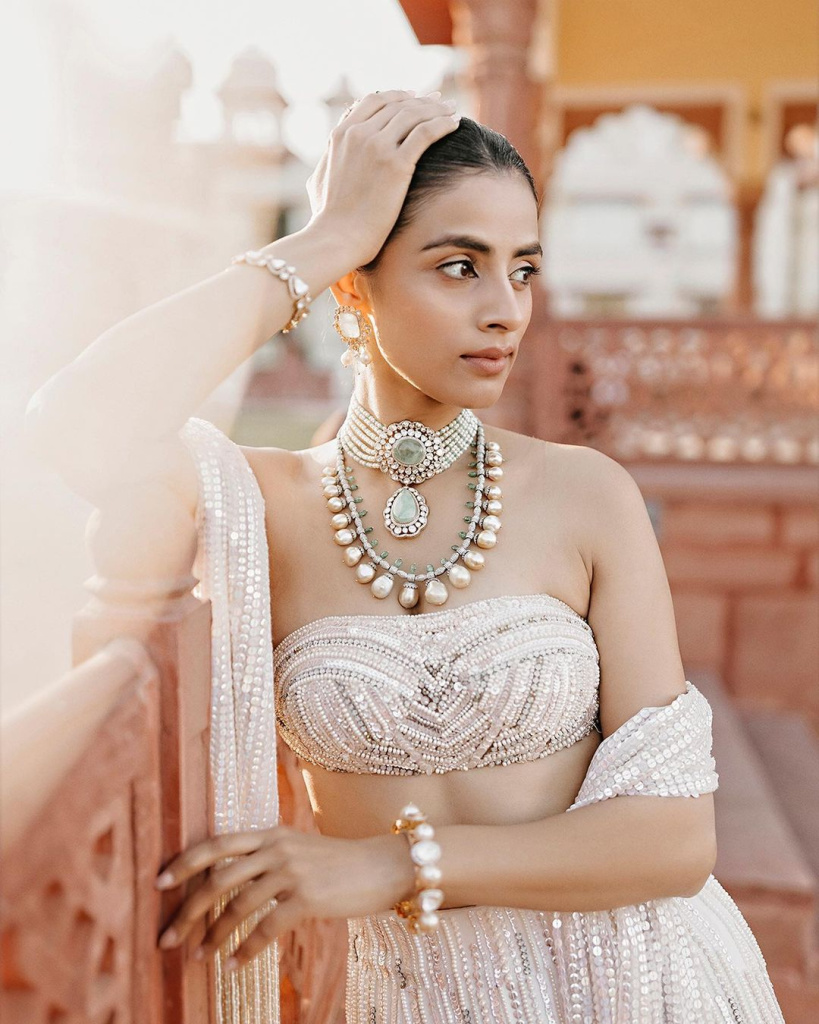
The karn phool, or ear ornaments, are delicate floral arrangements that adorn the bride's ears. These intricate designs symbolize fertility and are believed to enhance the couple's chances of conceiving a child in their new life together. The karn phool is a deeply symbolic Hindu wedding adornment that represents the bride's readiness to embrace motherhood.
The choice of flowers used in the karn phool holds specific significance. Common choices include:
- Jasmine: Representing purity, fertility, and divine grace.
- Rose: Symbolizing love, passion, and the blossoming of new beginnings.
- Marigold: Associated with the sun's energy and believed to invoke the blessings of Lord Surya.
- Lotus: A symbol of spiritual enlightenment and divine feminine energy.
- Mogra: A fragrant flower associated with marital bliss and happiness.
The skilled artisans who create these intricate floral arrangements weave together the delicate blooms with precision, ensuring that each petal and stem is perfectly placed to enhance the bride's beauty and carry the symbolic meaning.
Nath
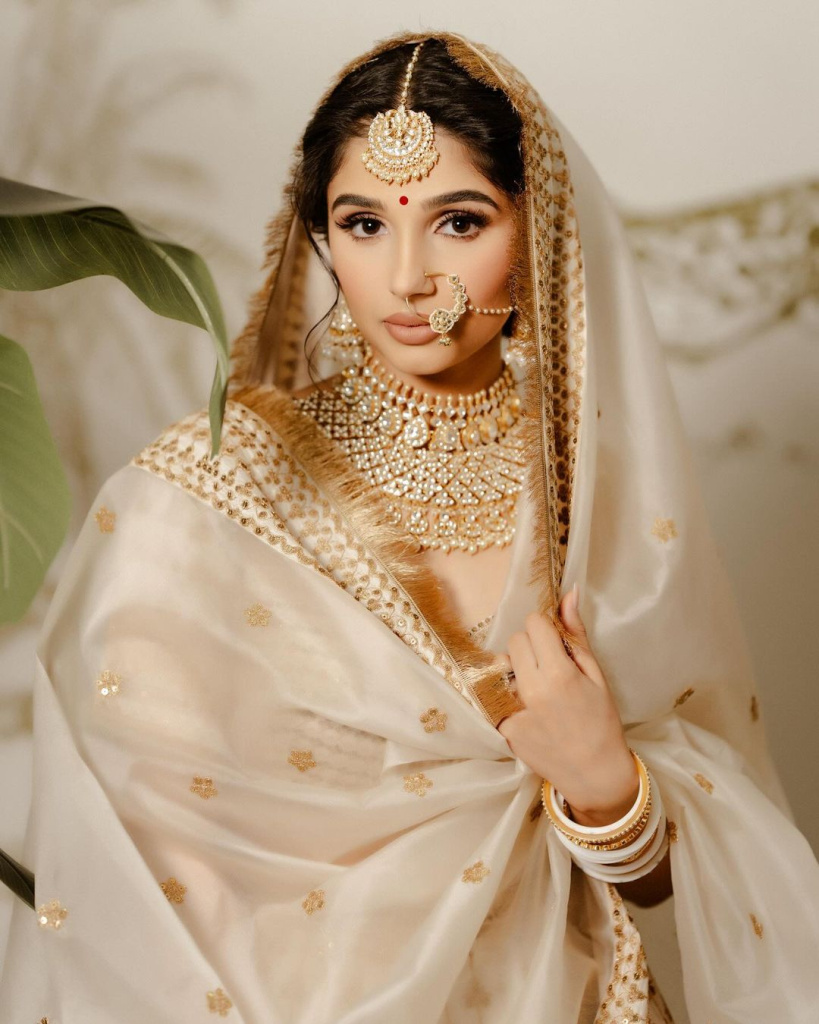
The nath, or the nose ring, is believed to represent the bride's marital status and her transition into womanhood, symbolizing her ability to nurture and care for her family. The nath is often crafted from precious metals like gold or silver and adorned with intricate designs and gemstones. In many regions of India, the nath is not just an ornament but a sacred symbol that holds deep cultural and spiritual significance. It is believed to enhance the bride's beauty and attract positive energies, ensuring a harmonious and prosperous married life.
The design and style of the nath can vary depending on regional traditions and personal preferences. Some brides opt for a simple stud, while others choose elaborate designs featuring intricate filigree work or precious gemstones like diamonds, rubies, or emeralds.
Haar
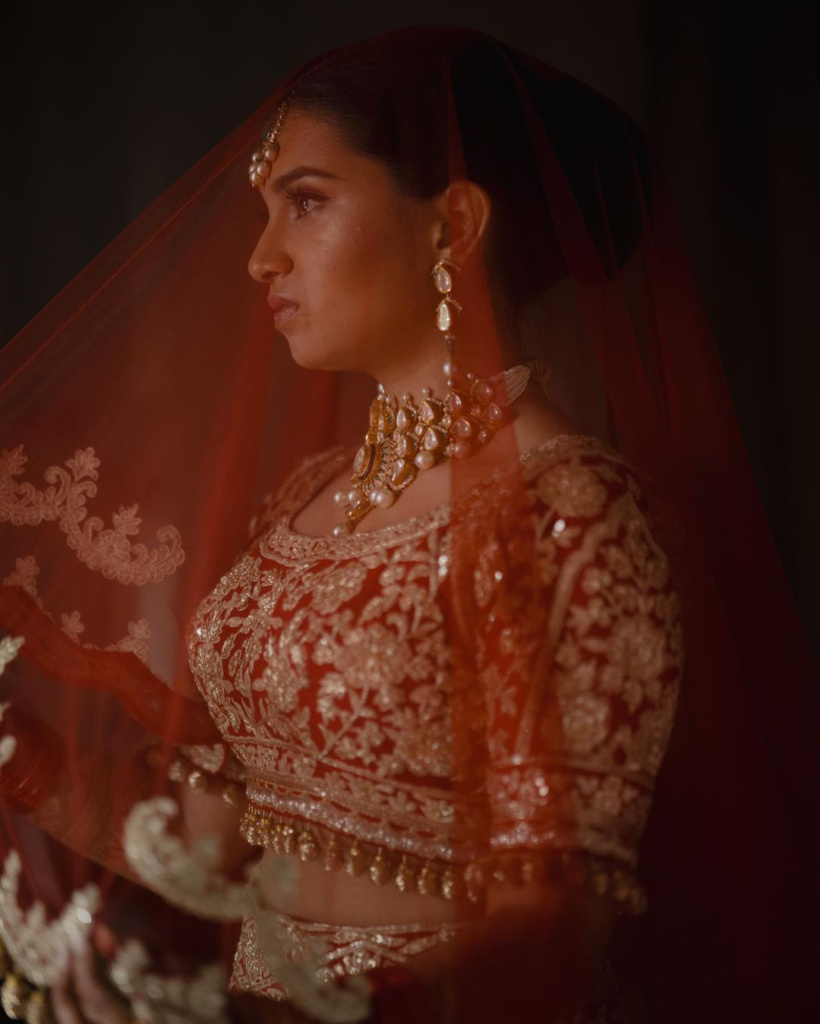
The haar, or the necklace, is a stunning piece of jewelry that adorns the bride's neck. It is a symbol of love, commitment, and the unbreakable bond between the couple. The intricate designs and precious stones used in its creation are believed to bring prosperity and happiness to the newlyweds.
In Hindu mythology, the goddess Parvati is often depicted wearing a magnificent haar, symbolizing her divine beauty and the sacred union with Lord Shiva. This tradition has been carried on for centuries, with each generation adding their own unique touches to the design and craftsmanship of the haar.
The haar can be crafted from various precious metals, such as gold, silver, or platinum, and adorned with a variety of gemstones like diamonds, rubies, emeralds, and pearls. Each stone is carefully chosen for its auspicious qualities and is believed to bring specific blessings to the newlyweds.
The intricate designs of the haar often depict traditional motifs and symbols that hold deep cultural significance. For instance, the peacock motif is a symbol of wealth and prosperity, while the lotus flower represents purity and spiritual enlightenment.
Baajuband
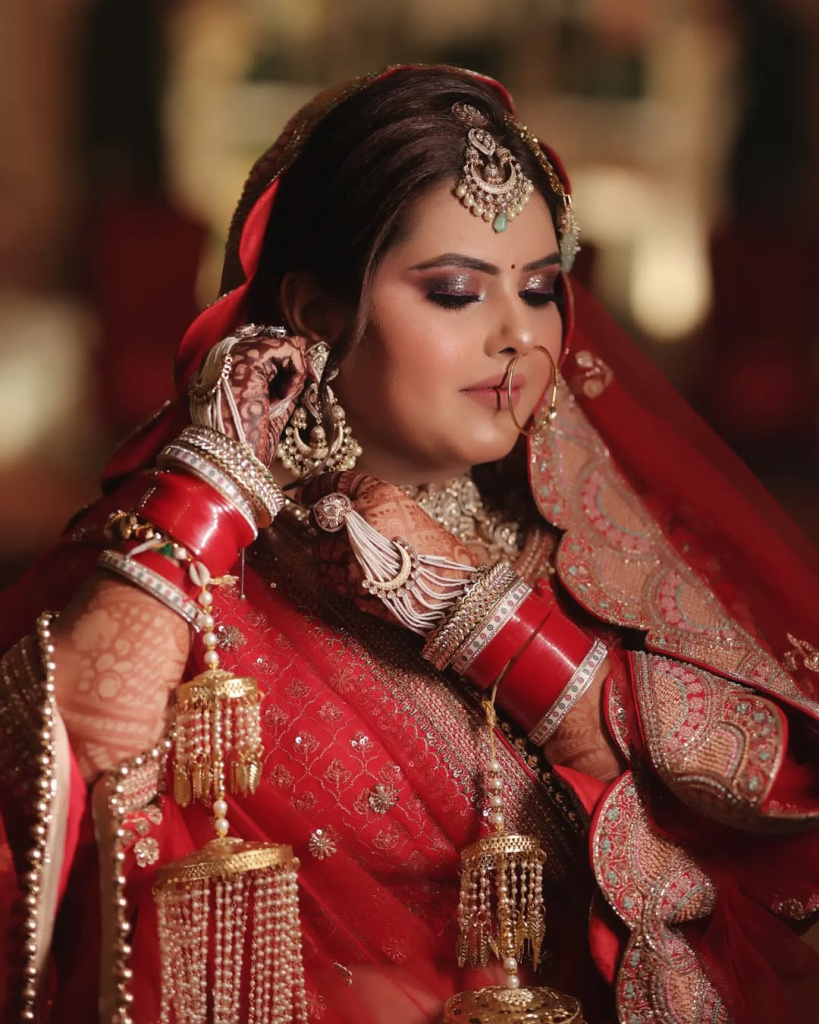
The baajuband, or the ornamental armlets, are beautiful Hindu wedding hand decorations. They are believed to represent strength and resilience, qualities that are essential for a successful and harmonious married life. These intricately designed armlets are often crafted from precious metals like gold or silver and adorned with intricate engravings and gemstones. The intricate designs and gemstones used in their creation are carefully chosen for their auspicious qualities and are believed to bring good fortune and prosperity to the newlyweds.
Wearing the baajuband is a moment of empowerment for the Hindu bride, as it represents her inner strength and resilience. It is a reminder that she is capable of facing any challenges that may come her way, and with the support of her partner, she can overcome them with grace and determination.
Choodiyan
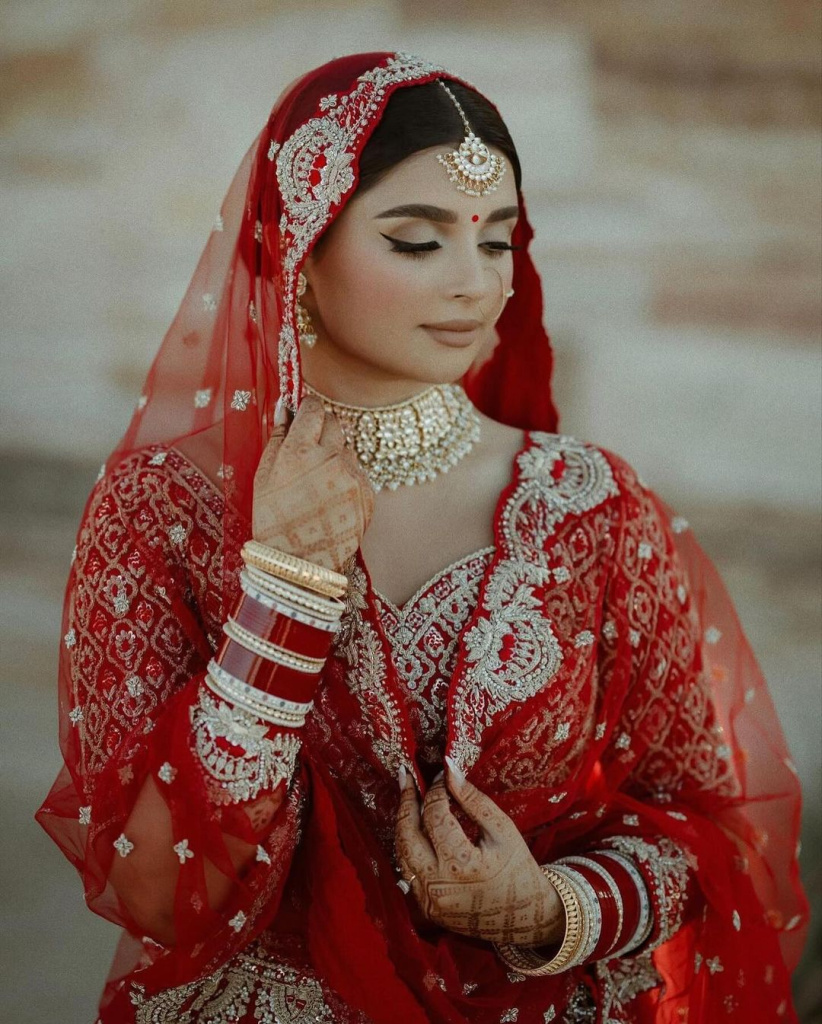
The choodiyan, or the traditional bangles, are an integral part of a Hindu bridal adornments. These colorful and intricately designed bangles are not just decorative pieces; they symbolize the bride's commitment to her new family and the sacrifices she may have to make for their well-being. The choodiyan are typically crafted from various materials like glass, lac, gold, or silver, and adorned with intricate designs and motifs.
According to Hindu traditions, the choodiyan are believed to have the power to ward off negative energies and protect the bride from the evil eye. They are also associated with fertility and are believed to enhance the chances of the newlyweds conceiving a child in their new life together.
The number of bangles worn by the bride can vary depending on regional traditions and personal preferences. In some regions, the bride wears a specific number of bangles, each representing a different virtue or blessing. For instance, a set of 21 bangles is believed to symbolize the 21 embodiments of the goddess Parvati, representing her divine feminine energy and the blessings she bestows upon the newlyweds.
During the wedding ceremony, the groom often aids in adorning the bride's wrists with the choodiyan, symbolizing his commitment to supporting and cherishing her throughout their married life. After the wedding, the bride is expected to wear the choodiyan for a certain period, which can range from a few weeks to a year, depending on the regional traditions. It is believed that removing the choodiyan before the designated time may bring ill fortune to the couple.
Mehendi
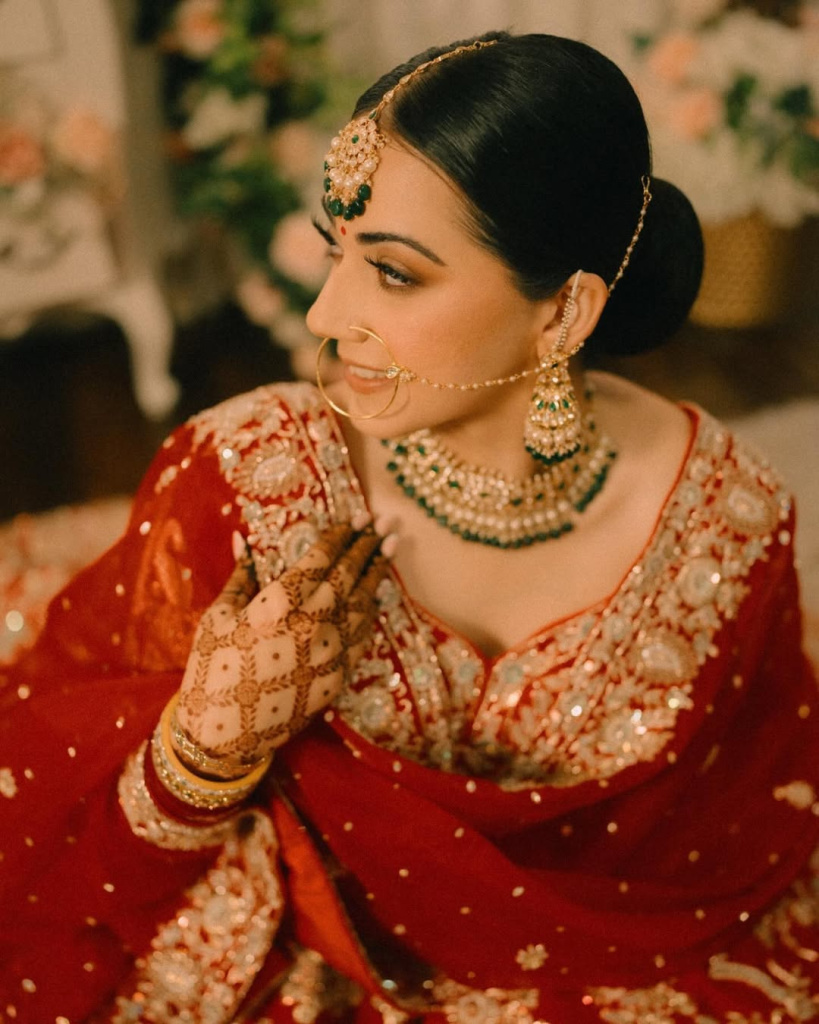
The mehendi, or the intricate henna designs adorning the bride's hands and feet, is a timeless tradition that holds deep cultural significance. It is believed to bless the bride with happiness, fertility, and good luck, while also enhancing her beauty with its intricate patterns and vibrant colors. The mehendi ceremony is a joyous occasion, often celebrated with music, dance, and the gathering of family and friends.
The process of applying mehendi is a delicate and intricate one, often performed by skilled artists who have mastered the traditional techniques. The designs used can vary depending on regional traditions and personal preferences, but they often incorporate elements of nature, such as flowers, paisley patterns, and intricate geometric shapes.
The henna paste used for mehendi is made from the dried leaves of the Lawsonia inermis plant, which is carefully ground and mixed with various ingredients like lemon juice, sugar, and essential oils. The paste is then applied to the bride's hands and feet, creating intricate patterns that gradually darken over time as the henna dries and stains the skin.
Aarsi
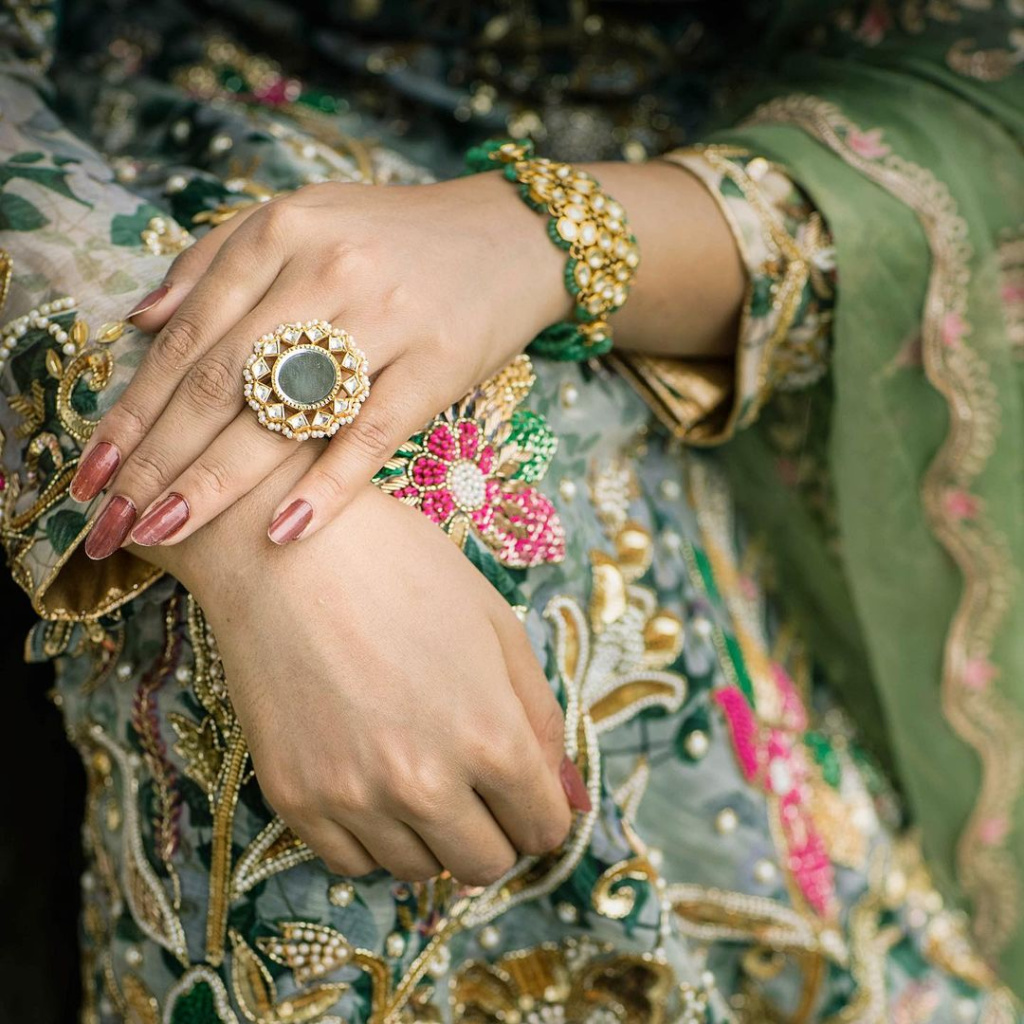
The aarsi, or the hand mirror, is a symbolic adornment that represents the bride's ability to reflect upon herself and her actions. It is believed that by gazing into the mirror, the bride can reflect on her inner self and cultivate a sense of self-awareness and mindfulness. This practice is rooted in the ancient teachings of Hinduism, which emphasize the importance of self-reflection and spiritual growth. The aarsi is often crafted from various materials like brass, silver, or intricately carved wood, and adorned with intricate designs and motifs.
During the wedding ceremony, the aarsi is often presented to the bride by her mother or a respected elder, symbolizing the passing of wisdom and guidance from one generation to the next. The act of presenting the aarsi is a reminder for the bride to always remain grounded and true to herself, even as she embarks on this new chapter of her life.
Kamarband
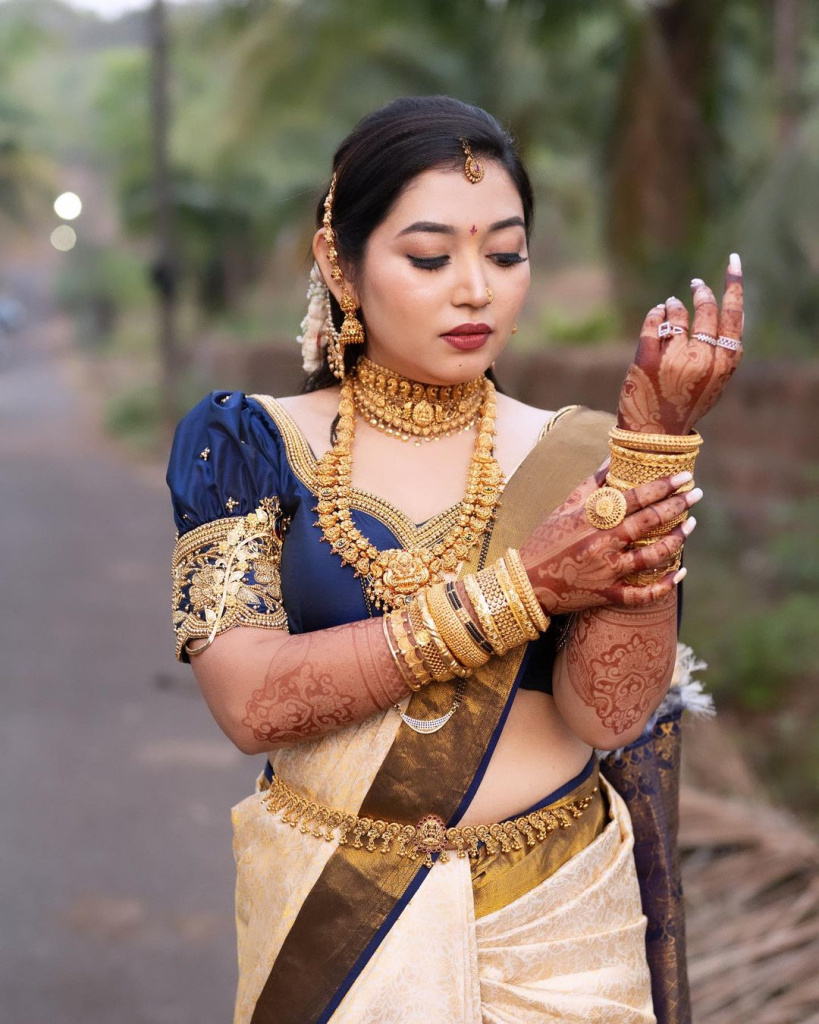
The kamarband, or the ornamental belt worn around the waist, is a stunning piece of jewelry which is believed to represent fertility and prosperity. In many regions of India, the kamarband is not just an accessory but a powerful talisman believed to protect the bride from negative energies and the evil eye. The intricate designs and gemstones used in its creation are carefully chosen for their auspicious qualities and are believed to enhance the newlyweds' chances of conceiving a child.
Wearing the kamarband is a moment of empowerment for the Hindu bride, as it represents her ability to nurture and care for her family. As she adorns her waist with this beautiful ornament, she is reminded of the strength and resilience she possesses to navigate the challenges and joys of motherhood.
During the wedding ceremony, the groom often aids in adorning the bride's waist with the kamarband, symbolizing his commitment to supporting and cherishing her throughout their married life.
Paayal and Bichus
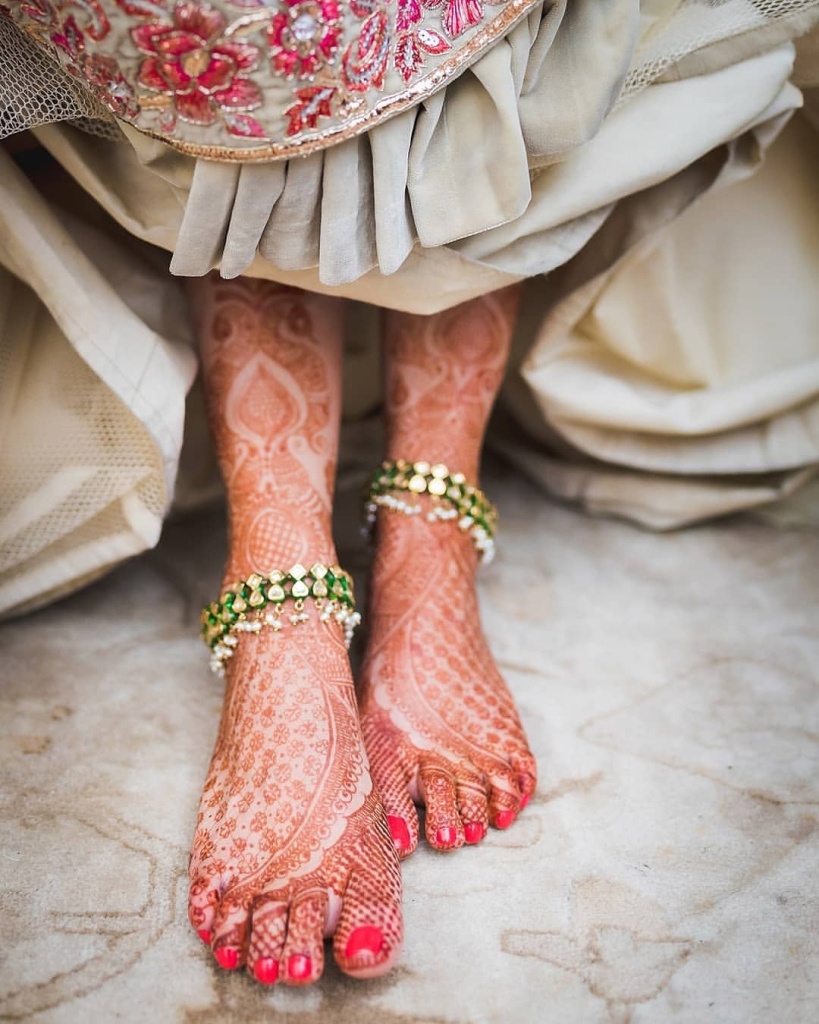
The paayal, or the anklets, and the bichus, or the toe rings, are beautiful adornments of a Hindu bride that decorate her feet. They are believed to ensure a strong and stable foundation for the couple's journey together, while also enhancing the bride's graceful movements. The jingling sound produced by the paayal is believed to ward off negative energies and attract positive vibes, ensuring a harmonious and prosperous married life for the newlyweds.
The paayal and bichus are also believed to enhance the bride's feminine grace and movements, adding a touch of elegance and beauty to her every step. As she walks down the aisle, the gentle jingling of these ornaments is a melodious reminder of the sacred journey she is embarking upon.
Itar
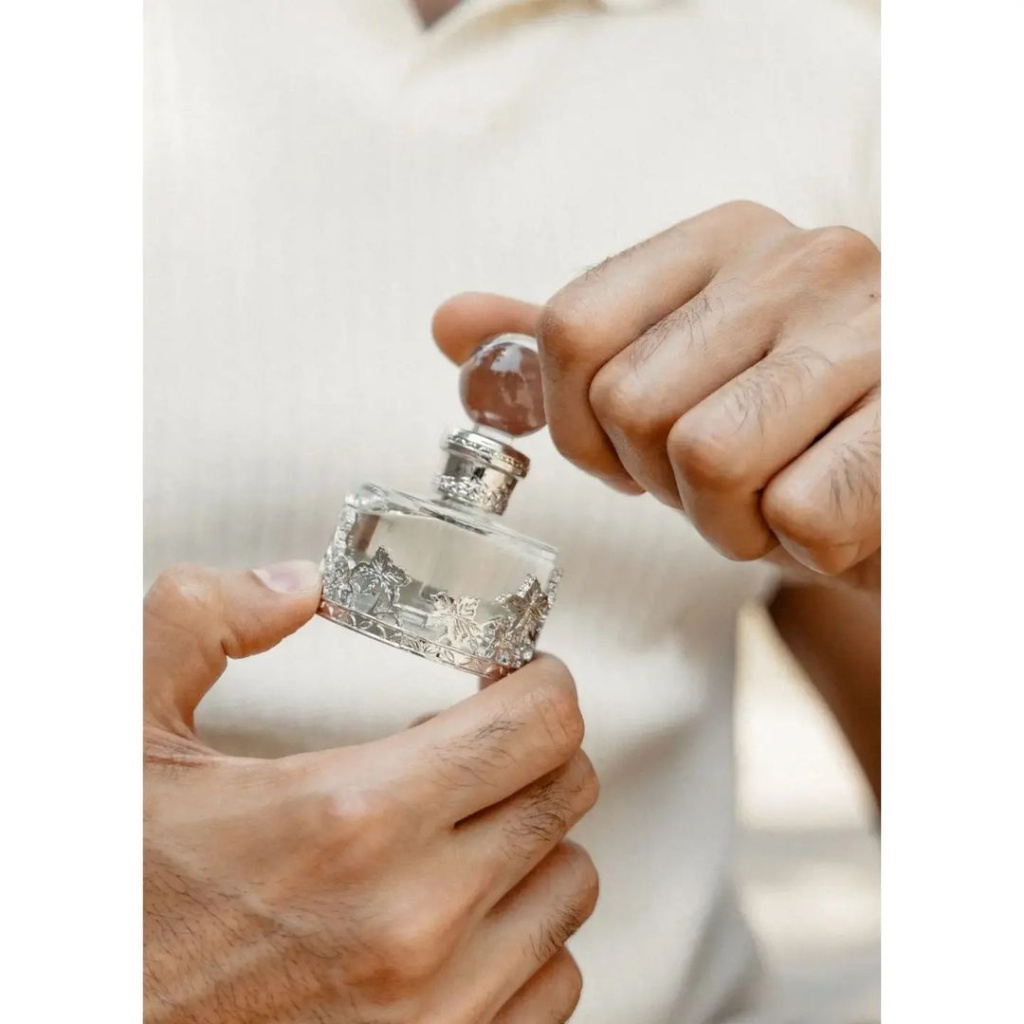
The itar, or the fragrant perfume, is an essential part of Hindu wedding adornments. It not only adds to the bride’s allure but also represents the sweetness and purity that she brings to her new life as a wife. The itar is typically a blend of various natural ingredients like sandalwood, rose petals, jasmine, and musk, carefully crafted to create a unique and enchanting scent.
The use of fragrant perfumes in Hindu weddings dates back to ancient times, when it was believed that these aromatic blends had the power to attract positive energies and blessings. The act of applying the itar is a moment of purification and preparation, where the bride embraces the sweetness and purity that she brings to her new life as a wife. The itar is often applied to various parts of the bride's body, including her hair, wrists, and the nape of her neck. Each application is carried out with great care and reverence.
Wedding Dress
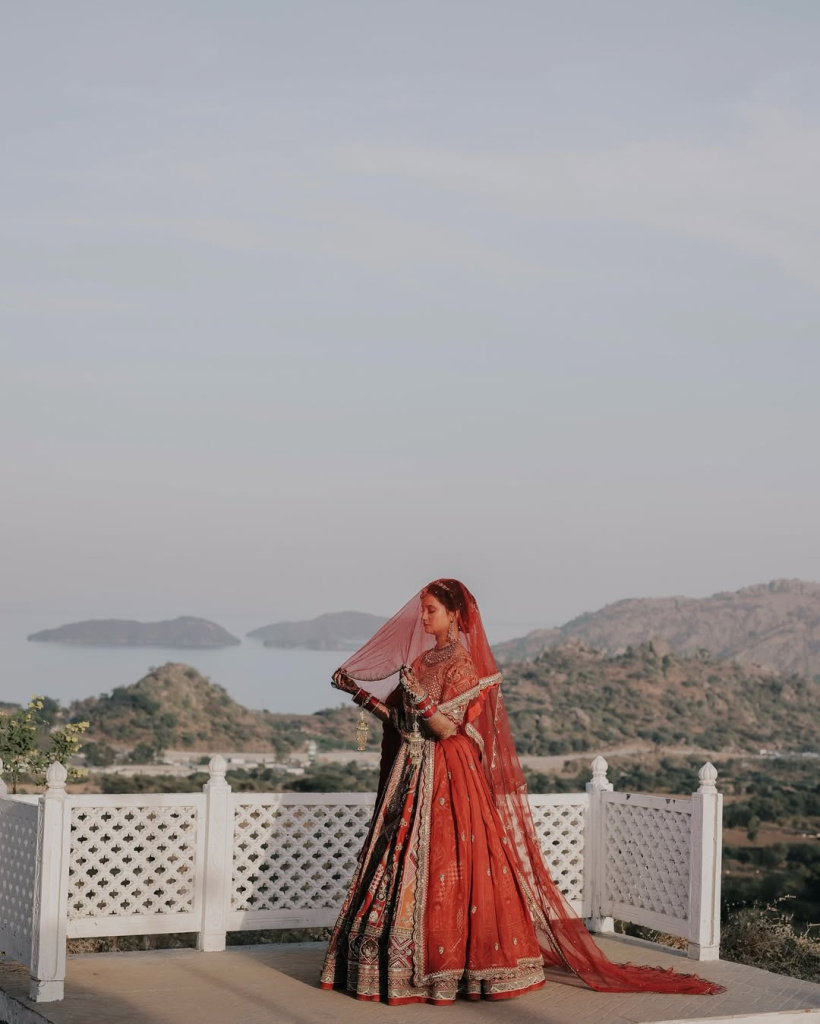
Finally, the wedding dress, or the lehenga, is the crowning glory of the bride's adornment. The lehenga is a traditional Indian garment that consists of a long, flowing skirt paired with a fitted choli (blouse) and a dupatta (scarf). This ensemble is often crafted from luxurious fabrics like silk, velvet, or intricately woven brocades, and adorned with intricate embroidery, sequins, and precious stones.
The design and color of the lehenga can vary depending on regional traditions and personal preferences, but it is often a vibrant and colorful ensemble that reflects the vibrancy of Indian culture. Common colors include shades of red, which symbolize love and fertility, and shades of green, which represent new beginnings and prosperity.

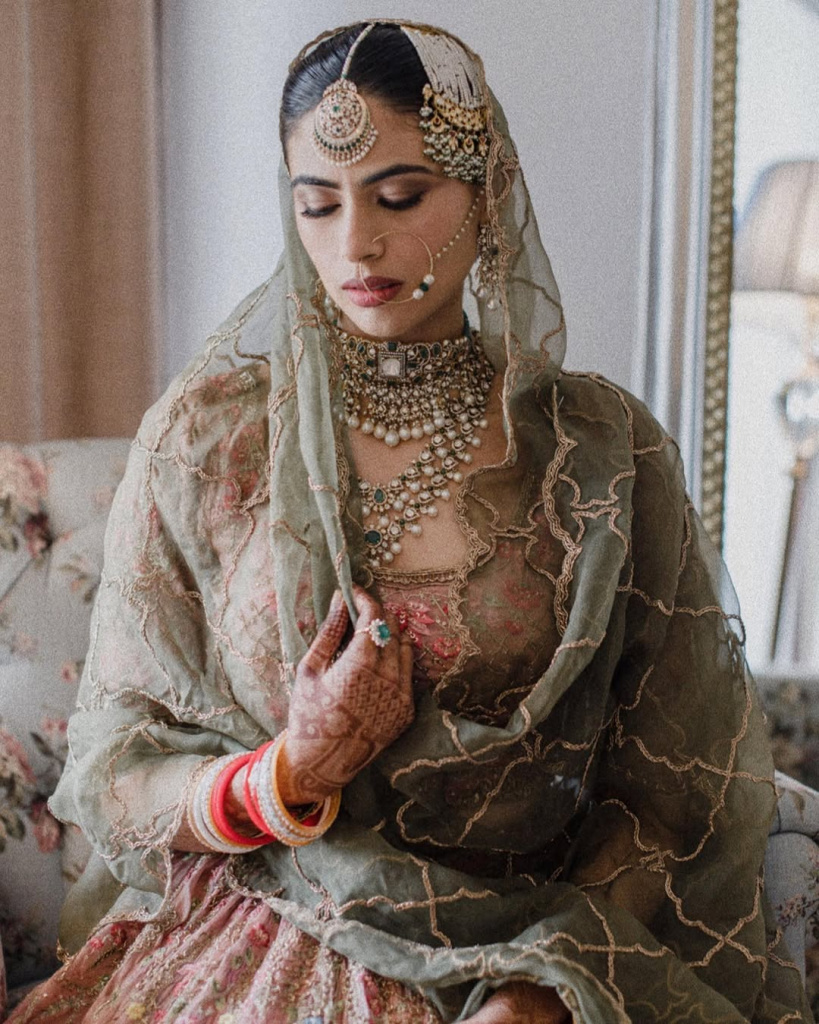
The process of selecting and crafting the perfect lehenga is a labor of love, often involving skilled designers who pour their hearts into creating a masterpiece worthy of the bride's special day. Each stitch and embellishment is carefully placed, imbuing the garment with cultural significance and the bride's personal style.










